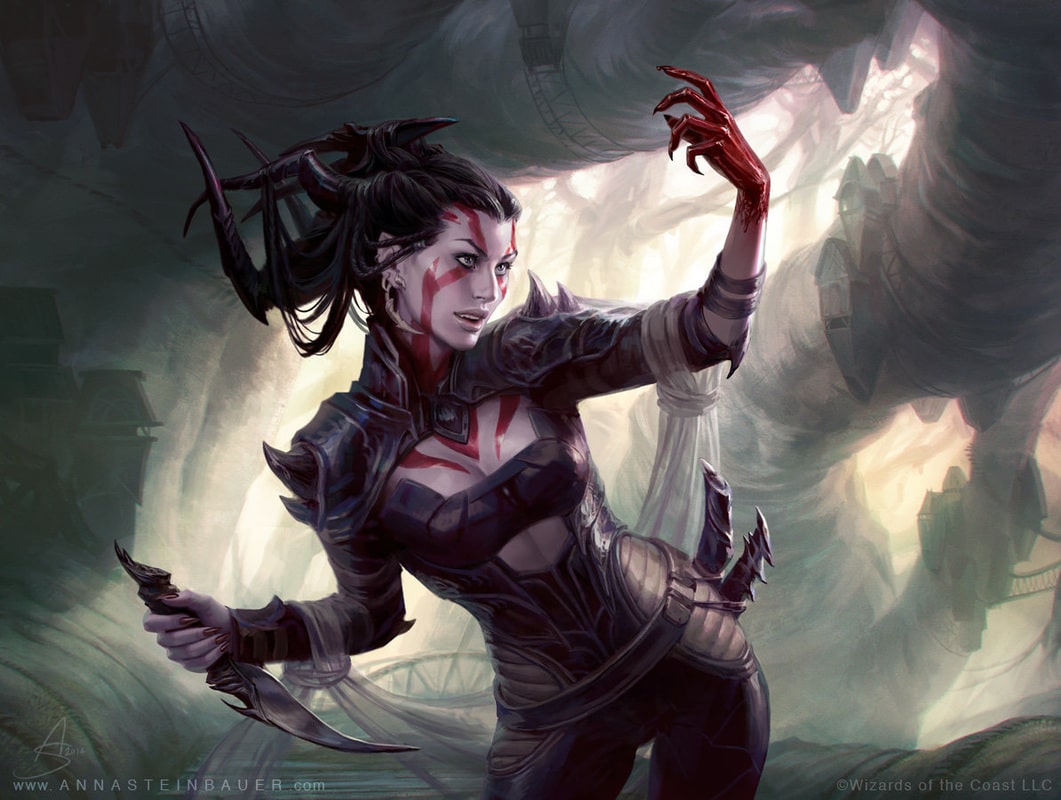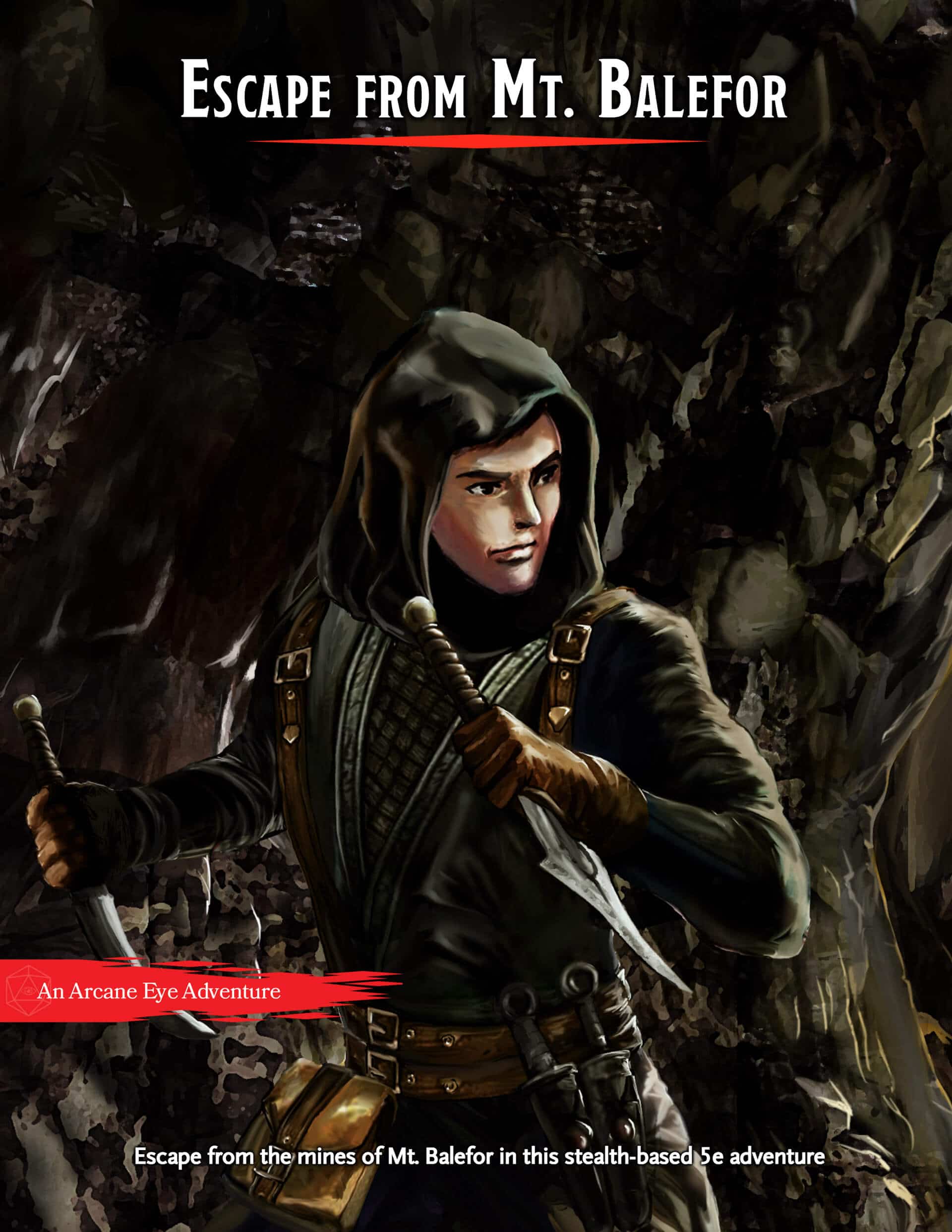Lineage Guide 5e
Published on April 15, 2022, Last modified on May 16th, 2022

Anna Steinbauer - Wizards of the Coast - Bloodbond Vampire
What is this guide?
This guide is meant to give you an idea of whether or not the lineage will be right for your 5e character build.
The color code below has been implemented to help you identify, at a glance, how good that option will be for your lineage. This color coding isn’t a hard and fast rule; there are plenty of sub-optimized options out there that will be viable to your party and will be fun to play.
- Black is a trait shared by many races and or will not impact the effectiveness of your character build
- Red isn’t going to contribute to the effectiveness of your character build at all
- Orange Situationally good, but a below-average option otherwise
- Green is a good option
- Blue is a great option, you should strongly consider this option for your character
- Sky Blue is an amazing option. If you do not take this option your character would not be optimized
Tasha's Cauldron of Everything Update
Tasha's Cauldron of Everything has added the "Customizing Your Origin" option that may affect the ability score increases, languages, and proficiencies in this guide. To read more about this, visit our D&D Race Guide.
What are Lineages in 5e?
Source: Van Richten's Guide to Ravenloft
Lineages represent magical transformations that your character has undergone that change their physiology. Whether you have been bitten by a vampire, infused with eldritch magic, or reborn into a new life, these lineages will provide you with additional features and traits that represent your new-found abilities.
All of the below subraces allow you to choose a “base” race, which will provide skill proficiencies and movement options. These traits carry over for your character, the rest of the base race’s traits are replaced with the lineage’s traits.
Lineage 5e Subraces
Dhampir
Speed: Extra movement speed is never wasted.
Ancestral Legacy: Being able to keep your previous race’s movement options allows for some substantial buffs if you were to choose a base race that had a natural flight speed. When balancing races, a fly speed was taken into consideration so races with flight at 1st level typically have less strong traits to make sure they’re not overly powerful. The lineage’s Ancestral Legacy feature allows you to add a fly speed to your character’s race, on top of all the other benefits offered by the lineage.
Darkvision: 60ft of Darkvision is always nice.
Deathless Nature: Not needing to breathe is situationally useful when you need to travel underwater or encounter poisonous gas.
Spider Climb: The climbing speed at 1st level is alright, but being able to move up vertical surfaces or across ceilings while keeping your hands free can enable a ton of advantageous in battle. Especially for builds that want to stay out of their enemy’s range and attack from afar.
Vampiric Bite: Most natural weapons aren’t particularly strong. While the Vampiric Bite only does 1d4 + CON, it comes with some additional effects that you can use a number of times up to your proficiency modifier once per long rest. The first effect allows you to regain hit points equal to the damage, which is a solid way to self-heal for martial characters. The second effect gives you a bonus, equal to the amount of damage you landed on your hit, to the next ability check or attack roll you make. More often than not the self-heal option will be chosen, but the second option can be useful if you’re setting up an attack that simply needs to land, like a paladin’s smite or rogue’s sneak attack.
Hexblood
Creature Type: Being the fey creature type allows you to avoid some pretty nasty spells, like hold and dominate person. You are more susceptible to other spells, like hallow and protection from evil and good, but these aren’t as bad as the spells you gain immunity to. Your biggest worry with being a fey is the banishment spell, though this is more effected by your backstory than your creature type.
Ancestral Legacy: Being able to keep your previous race’s movement options allows for some substantial buffs if you were to choose a base race that had a natural flight speed. When balancing races, a fly speed was taken into consideration so races with flight at 1st level typically have less strong traits to make sure they’re not overly powerful. The lineage’s Ancestral Legacy feature allows you to add a fly speed to your character’s race, on top of all the other benefits offered by the lineage.
Darkvision: 60ft of Darkvision is always nice.
Eerie Token: Both of the abilities offered by this trait are fairly easy to recreate with spells. The messaging trait is essentially a consistent, free use of sending. Unfortunately, the message can only travel 10 miles and can’t be responded to which makes it much less effective. The other trait is similar to the effect granted by find familiar, in which you can see through your familiar’s eyes. Seeing as the creature has to be holding your token in order for you to activate this, it’s quite narrow in its usefulness.
Hex Magic: Disguise self and hex are both amazingly useful spells that can fit into a wide range of builds. Seeing as hex is normally restricted to the warlock’s spell list, this is a great way to get access to a tightly restricted spell that can boost damage for martials as well as spellcasters. While builds without spellcasting can only cast each of the spells once per long rest, those will spellcasting will be able to cast them using spell slots of the correct level.
Reborn
Ancestral Legacy: Being able to keep your previous race’s movement options allows for some substantial buffs if you were to choose a base race that had a natural flight speed. When balancing races, a fly speed was taken into consideration so races with flight at 1st level typically have less strong traits to make sure they’re not overly powerful. The lineage’s Ancestral Legacy feature allows you to add a fly speed to your character’s race, on top of all the other benefits offered by the lineage.
Deathless Nature: There is a lot to unpack in this trait. First, you get resistance against being diseased, being poisoned, and poison damage. Poison damage is relatively common, which makes this a solid durability boost right off the bat. The second trait gives you advantage on death saving throws, which is stellar for characters who may not have a cleric or paladin to back them up with revivify. Not needing to eat, drink, breathe, or sleep are all situational benefits. All in all, this trait provides a bit of extra durability but not much more.
Knowledge from a Past Life: Adding a bonus d6 to skill checks equal to your proficiency modifier per short rest will always come in handy, especially for skill monkeys, stealthy characters, or social characters that will be making plenty of checks.
Sources Used in This Guide
- BR: Basic Rules
- GotG: Bigby Presents: Glory of the Giants
- SotDQ: Dragonlance: Shadow of the Dragon Queen
- ERLW: Eberron: Rising from the Last War
- EEPC: Elemental Evil Player’s Companion
- EGtW: Explorer’s Guide to Wildemount
- FToD: Fizban's Treasury of Dragon
- GGtR: Guildmasters' Guide to Ravnica
- MotM: Monsters of the Multiverse
- MToF: Mordenkainen’s Tome of Foes
- MOoT: Mythic Odyessys of Theros
- PAitM: Planescape: Adventures in the Multiverse
- PHB: Player's Handbook
- SAiS: Spelljammer: Adventures in Space
- SCoC: Strixhaven: A Curriculum of Chaos
- SCAG: Sword Coast Adventurer’s Guide
- TCoE: Tasha’s Cauldron of Everything
- TTP: The Tortle Package
- WBtW: The Wild Beyond The Witchlight
- VRGtR: Van Richten's Guide to Ravenloft
- VGtM: Volo's Guide to Monsters
- XGtE: Xanathar’s Guide to Everything
